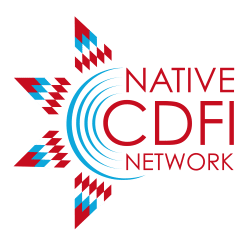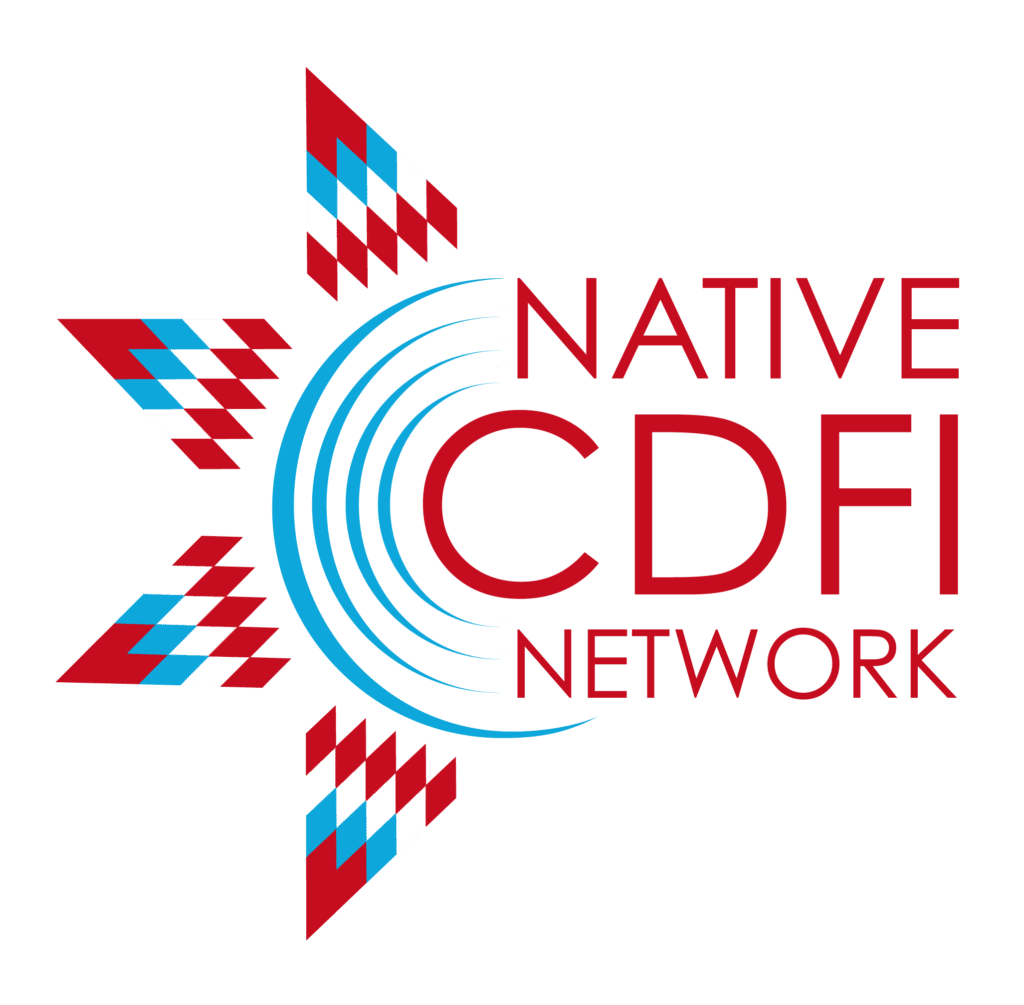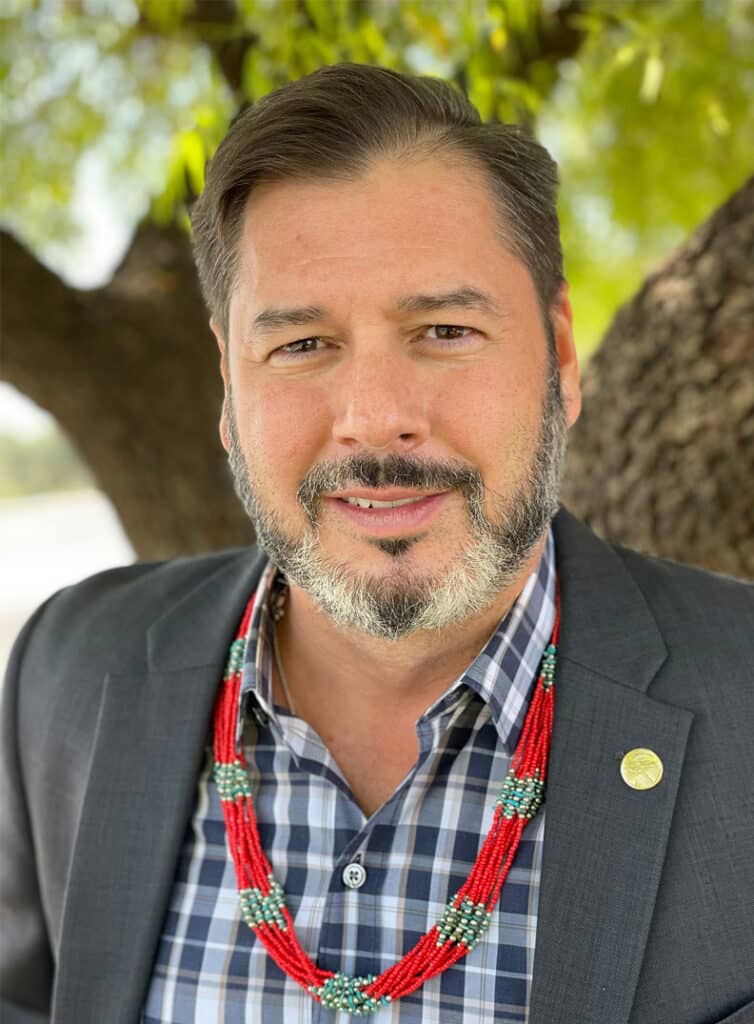
In this latest edition of “Difference Makers,” NCN sits down with Chris James, who serves as President and CEO of the National Center for American Indian Enterprise Development (the National Center) which recently launched Native Edge Finance (NEF), an emerging Native CDFI. Headquartered in suburban Phoenix, Arizona, NEF’s goal is to provide economic opportunities for Native communities and businesses by providing products and financial services to support business growth and development.
During his tenure with the National Center, Chris has doubled the organization’s revenue, expanding its procurement and training programs throughout the country, and boosting attendance at the National Center’s annual Reservation Economic Summit (RES) by nearly 30 percent over the last five years. From 2011-2016, he served a U.S. Presidential appointment as Associate Administrator at the U.S. Small Business Administration (SBA), where he led the Office of Field Operations and the Office of Native American Affairs and established the SBA’s Office of Intergovernmental Affairs. Prior to his SBA tenure, he worked as an Associate Program Manager at the U.S. Department of the Treasury, serving as a liaison between the CDFI Fund, tribal governments, and other federal government agencies.
In this engaging conversation with NCN, Chris discusses what prompted the National Center to create its own Native CDFI and how it will be committed to filling gaps in the lending space for Native-owned businesses, particularly those engaged in federal procurement.
NCN: Greetings Chris, it’s good to have you with us today. Welcome.
James: Thank you so much for including me on this series.
NCN: So why do you do what you do? How and why did you come to lead NCAIED, which is the parent organization of Native Edge Finance?
James: Well, it’s in my blood. I was born and raised in Cherokee, North Carolina. My family has had small businesses on the reservation since the 1950s, maybe even before. Economic development, small business development has been in my blood since I was a child. I started working for my tribe in the early 2000s. When I started at the Sequoyah Fund, it was an established CDFI but it had gone through a bit of a change. When I started, I didn’t quite know what a CDFI was, but then I had to redevelop a whole system for that organization. We literally had two empty offices, a fireproof safe, and an outstanding loan portfolio. As you know, the Sequoyah Fund now has a huge portfolio. They have wonderful programs and provide loans all over western North Carolina. It took a lot to get to that point. My experience there at the Sequoyah Fund – putting things in place to essentially build a CDFI from scratch – led me to my role working with the CDFI Fund. It’s great to see where the Sequoyah Fund is now. I love catching up with Russ Seagle and Hope Huskey (Executive Director and Associate Director, respectively) and hearing about all of the great things they’re doing.
NCN: As you know, there are currently 64 federally certified Native CDFIs across the country and many more “emerging” CDFIs – including Native Edge Finance – following in their footsteps. Why did and do Native communities and organizations feel it necessary to create CDFIs, and what fundamental role do they play?
James: In a lot of our communities, including Cherokee, North Carolina, especially in the early 2000s, you saw this growth of the Native CDFI movement. At that point, you had maybe a job opportunity with the tribe, maybe a job opportunity with the state or federal government, but often that was it. So building a culture of entrepreneurship was a necessity, because it did create this third tier of the small business owner. Unfortunately, because in a lot of our rural communities there was no financial institution, there just wasn’t a pathway to get financing for small business or a bank did not see a $25,000 small business loan as a good loan because it just wasn’t part of their lending strategy. So CDFIs created that lending strategy, created the idea of a whole new sector of entrepreneurship in our community. By the time I left the Sequoyah Fund in 2008, we had created about 15% of all new jobs on the reservation, and that’s a huge statistic even back then. So having that third sector of entrepreneurship is super important. I think that’s why the CDFI industry continues to grow.
NCN: What do policymakers, philanthropy, banking institutions, and the general public who aren’t familiar with Native CDFIs need to understand about them and the difference they make?
James: I think it’s hard to explain what a non-regulated bank is. People just say that whole concept doesn’t make sense. So even though the CDFI industry has been around since the 1990s, it’s still a new idea. You have these loan funds doing sort of non-regulated loans and it makes people nervous. Also, I think CDFIs at times have separated themselves so far from the tribes, where instead of having a great relationship with their tribal communities, the CDFI is often set to the side as an independent nonprofit – which it definitely should be, as it’s part of the rules – but they lose their connection with the community beyond just their customers. So what the Sequoyah Fund does very well is they continue to work in conjunction with the tribe. Their offices are in a tribal facility. They have good relationships with council. They get funding from the foundation that the tribe holds. All of those things help build a cohesive relationship between the tribe and the Native CDFI and it helps it grow. We can see a pretty good success rate with the Sequoyah Fund of growth and continued services to the community while having a good relationship with the tribe. That’s really important. Through the years, some of us have gotten closer to the tribe, some have not. Part of that is CDFIs really telling their story and explaining what they are, what they do, and then creating those relationships.
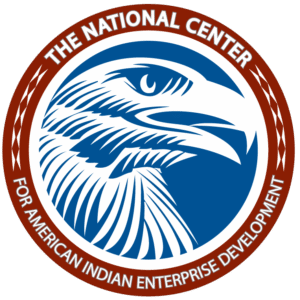
NCN: So let’s turn to Native Edge Finance. NCAIED, the largest business development and technical assistance training organization in the country for American Indian and Alaska Native-owned businesses, has been around for more than 50 years. What compelled NCAIED to create Native Edge Finance?
James: As an organization, this topic has been in discussion for a very long time. However, over the past six years our primary focus has been enhancing our technical assistance and our ability to provide more services to our clients. Right now, we have about 2,000 clients throughout the United States. With most of those clients, we provide some type of one-on-one support or training. They also have access to all of our services, including procurement development, where we often saw a lot of our clients – even though maybe they already had a relationship with a lending institution – need of a little bit of gap financing. We felt like this was something we could offer.
So as we developed this structure for financing, we saw we already provided that technical assistance. We already had a referral system in place for various lending institutions. Then we’re like, “Well, why don’t we look at the CDFI model as an option? In developing Native Edge Finance, the idea is to start off providing some working capital loans and then grow to provide other types of loans to help our customers that are getting into procurement get their first contract or help them get their businesses to the next level. Our goal right now is to capitalize the loan program. We’re doing that as a self-capitalization, which is not always easy, but we’re almost there and we should have our first couple of loans out in late summer or early fall.
NCN: The National Center has long worked to connect Native businesses with lenders through RES and the Native Edge Institutes. Through Native Edge Finance, the National Center has itself become a lender to those businesses. What void does Native Edge Finance seek to fill? How does it represent the next logical step in your organization’s growth?
James: It’s a natural outgrowth of our focus on procurement. We’ve been an organization for 54 years. Since the 1980s, we have been working with tribes and Native-owned businesses and getting into various supply chains, specifically around the federal government. At one time, we were the only Native procurement technical assistance center across the nation. We had offices throughout the United States. Now we serve 26 states. The majority of clients we work with – hundreds of businesses – we’re working with them already in the procurement space, so we feel like that’s a lot of the gap we see in financing. We know we can help support folks that want to get into the space or get to the next level.
I always say if you can do business with the federal government, you can also do business with corporate America. We can maybe provide some financing to help get a contract or help get some support into the supply chains of our country. Our businesses have great capacity in almost every sector. It’s amazing, from having construction companies that are building huge facilities for the federal government, building facilities for their own community like casinos, doing jobs in big cities around the country, all the way to manufacturers who may be making widgets for the F-15 or F-22 fighter. One of our clients made a little antenna piece on one of the military helicopters. There’s a lot of capability out there. I think having not only the financial support for that capability but the promotional support for that capability will get those businesses to the next level and get them more deeply into the supply chains.
“I see Treasury’s point of view that, “Hey, we really need to improve these processes.” But on the flip side, don’t put so many things into the process. That’s going to deter CDFIs from doing the grassroots work that’s happening every day. Those government officials need to get out and talk with the CDFIs and see what’s going on… Look at those statistics, celebrate that work, and think about how you can help them get to the next level.”
NCN: As you know, Treasury and the CDFI Fund are currently in a pause period regarding CDFI Certification. We just learned they’re going to be extending that pause to make sense of all the input they’re getting regarding their proposed changes to the CDFI Certification process. As you mentioned, you once worked at the CDFI Fund, where you committed a great deal of effort to prepare Native CDFIs to achieve certification, retain certification, and make the process simpler for them. What’s your take on where this process is now?
James: I loved my time at the CDFI Fund and Treasury’s a wonderful institution to work for. My primary role at Treasury was as an advocate. That’s what I’ve been in every job I have. When I was at the CDFI Fund, I estimate we had about a 40% increase in certified Native CDFIs. Part of that was because I was an advocate internally to help those CDFIs through the process. I think if that is not occurring now, it is something that needs to be restarted. Someone needs to be inside advocating and being a voice for Native CDFIs.
Second, we developed a capacity-building program that provided technical assistance to Native CDFIs and also advised their executives, because often in the CDFI industry, you walk into it without having all of the tools you need. You’re either learning from your peers or you maybe go through some training programs that give you a little bit of development, but they don’t give you the whole picture. So during that time, we created several training cohorts to help them get their CDFIs to the next level. If that doesn’t exist anymore, it should, because it could help with the certification process. It could help with the overall training. Treasury needs to take responsibility to support these institutions. If you support them financially, you should also support them with that technical assistance.
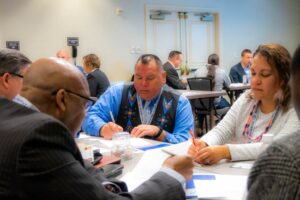
Participants collaborate at a Native Edge Institute training hosted by NCAIED. (Courtesy: National Center for American Indian Enterprise Development)
I see Treasury’s point of view that, “Hey, we really need to improve these processes.” But on the flip side, don’t put so many things into the process. That’s going to deter CDFIs from doing the grassroots work that’s happening every day. Those government officials need to get out and talk with the CDFIs and see what’s going on. Hear the success stories of the businesses here, or the long track records of success of CDFIs like the Sequoyah Fund or Four Bands. There’s so many CDFIs who have been around for a long time and have provided awesome support for businesses. Look at those statistics, celebrate that work, and think about how you can help them get to the next level.
NCN: From your perspective, what do Native CDFIs like Native Edge Finance need to realize their full potential? What types of support do they need to achieve their missions and maximize their impact?
James: I think you can easily get stuck doing “the same old thing” if you’re not careful. For existing CDFIs, continue to look not only outside the box, but look inside the box to see how you can improve your training, your success coaching, and your lending policies. At the National Center, we have in-person group trainings on-location, but we also have a lot of one-to-one trainings. We do those either online or over the telephone, or sometimes we’ll even go to the person’s business. The idea of always having someone come to you is often a deterrent. Native CDFIs that are looking to get to the next level, think about how they can use all of the tools available to support their customers and help them succeed. Also look to the best practices of not only other Native CDFIs, but other, non-Native organizations. Often, there are organizations working in rural America that have practices that are very similar to what can happen in a reservation community. Really look for best practices, get to know the leaders in those communities, and maybe there’s even an opportunity for lending collaboration.
To learn more about Native Edge Finance, please click here.
